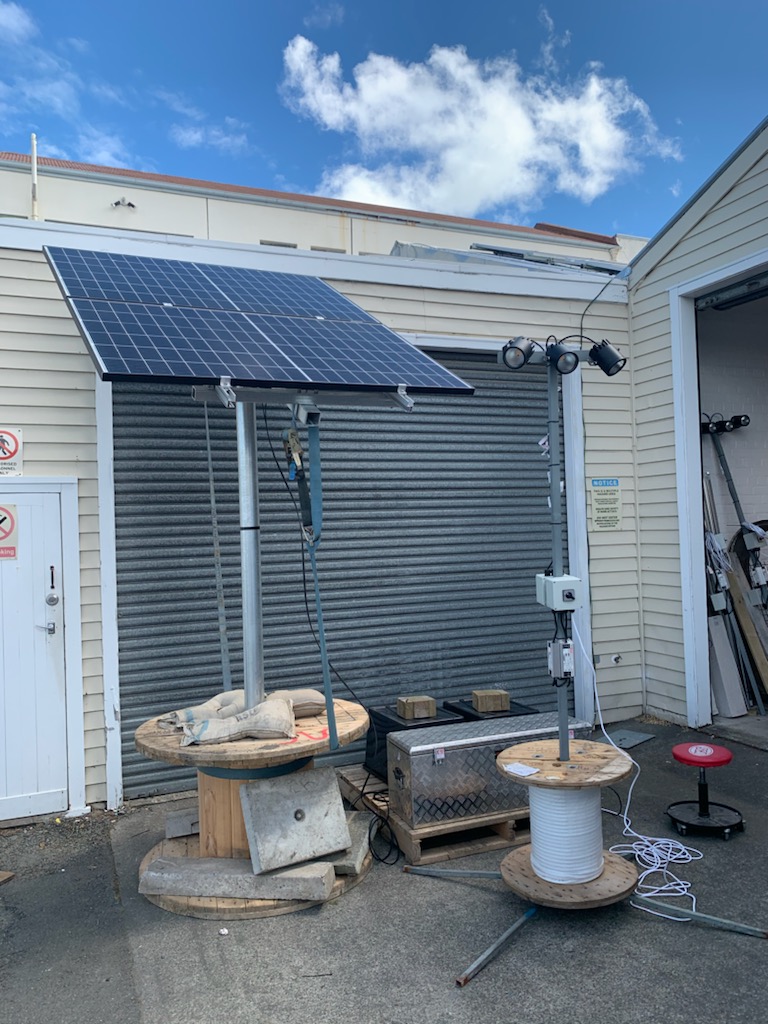Kerry Borkin and Titia Schamhart (photo: Department of Conservation).
A trial underway on the edge of the North Island’s Pureora Forest is exploring how New Zealand’s native bats/pekapeka respond to different types of artificial light.
The collaborative trial, combining expertise and knowledge from Department of Conservation (DOC) and Waikato University, will take two months and will see the bats’ behaviour monitored under different colours of artificial light.
The bats will not be harmed during the trial, which is taking place on private property adjacent to the thick Pureora Forest – a known habitat for New Zealand’s only native mammals.
DOC’s Kerry Borkin, a Science Advisor with 20 years’ experience working with bats, says although bats are nocturnal and use echolocation as their primary way of navigating, they have good vision and are very sensitive to certain kinds of light, because of the high proportion of rods in their eyes.
Determining how the bats respond to different colours of artificial light will help develop guidelines for councils installing lights in areas where bats are known to live.

“When we talk about light colour we don’t mean the different coloured lights you put up on the Christmas tree,” Ms Borkin says.
“At the supermarket you can buy warm white lights or cool white lights. These lights are different colour temperatures: warmer or cooler.”
“Warm colour lights have less UV and blue wavelength than cool white or blue lights and can have a slightly yellow or amber tone. Bats are likely to be more sensitive to UV and blue wavelength light than humans because of the high proportion of UV sensitive rods present in their eyes.
“The colour can have a range of effects on bats. Adding lights to an area can result in increases or decreases in bat activity depending on the species of bat.”
Waikato University PhD candidate, Titia Schamhart says her particular interest is in how the artificial light impacts on the behaviour of long-tailed bats from both urban and rural environments.
“Specifically, I want to know whether different light spectra produce different behavioural responses, such as avoidance due to increased predation risk or attraction due to increased insect abundance around the lights,” she said.
The Pureora study will provide Ms Schamhart with valuable experience in conducting this type of experimental research, and form the basis of her own research planned in Waikato and Taranaki in the next couple of years.
“Ultimately, I hope my research will provide some insights into the potential impacts of artificial lighting on long-tailed bats and how these impacts might be mitigated by improved urban design,” she said.
The researchers will put out lights of different colour temperatures along the forest edge and measure bat and morepork activity in relation to these. The research phase of the project will conclude in March, before a period of data analysis.
J.A Russell Ltd and Alf Downs Street Lighting have contributed lighting and electrical technology for this research work.



